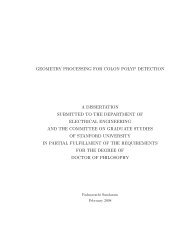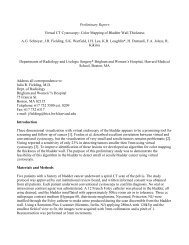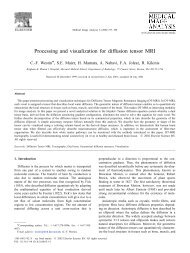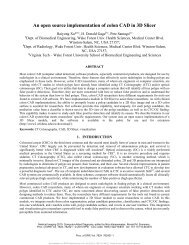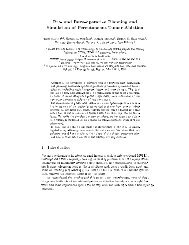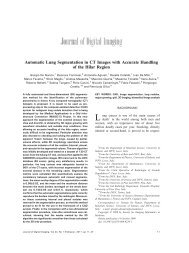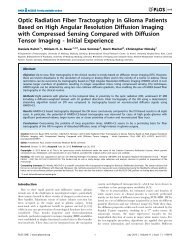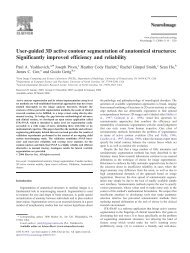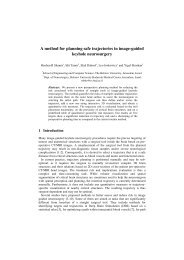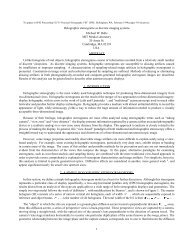BWH Manual (PDF) - INTRuST Neuroimaging Leadership Core
BWH Manual (PDF) - INTRuST Neuroimaging Leadership Core
BWH Manual (PDF) - INTRuST Neuroimaging Leadership Core
You also want an ePaper? Increase the reach of your titles
YUMPU automatically turns print PDFs into web optimized ePapers that Google loves.
4. Phantom Scan InstructionsFor site qualification, each site was required to successfully scan a BIRN agar phantom usingthe <strong>INTRuST</strong> acquisition protocol (see section 3). A shorter phantom scan protocol, theRoutine QC Phantom Scan Protocol, must be performed on a bi-weekly basis throughout thelength of the study (below). The purpose of this protocol is to ensure that any scannerproblems are detected early enough and their impact on the study is minimized. Data will beprocessed on an ongoing basis and the detection of problems will be reported immediately tothe site.4.1 Phantom PositioningAchieving a reproducible position is a key element to the system performance analysis thatwill be done bi-weekly. While the BIRN phantom is symmetric, care must be taken to placethe phantom in the head coil in the same location each time, with the screw top facingstraight up. If your BIRN phantom does not have a label in the coronal plane, please attachone. This way, you can always place the phantom in the scanner with the screw top facingup and the label facing the foot of the MRI bed. Padding should be placed around the coil toensure that the phantom does not move during the scan. Try to align the center of thephantom with the center of the coil. Use the alignment lights on your scanner to position thephantom in the center of the magnet. This is very important, as it will minimize distortion ofthe images and make the calibration data more accurate.4.2 Routine QC Phantom Scan ProtocolScan the phantom using the electronically loaded <strong>INTRuST</strong> QC Phantom Protocol whichincludes:1. Localizer2. ASSET Calibration Scan3. BIRN fMRI Sequence (echo planar sequence)Use only the imported <strong>INTRuST</strong> sequences to acquire the bi-weekly calibration data.If you have question regarding this procedure, please contact: MJC@bwh.harvard.edufMRI Sequence ParametersAcquisition type EPI gradient echo recalledScan planestraight axialField of view22 cmSlices: 274-mm-thick, 1-mm interslice gapTR2000 msTE30 msFlip angle90 degreesBandwidth100 kHzMatrix 64 × 64Number of volumes 200 + optional ‘warm-up’ volumescollected for QAScan time6.67 minutesNOTE: The NLC has supplied electronic protocols for installation by your local serviceengineer, physicist, or lead technologist. This will ensure that you have the correct protocolfor your MRI scanner.



